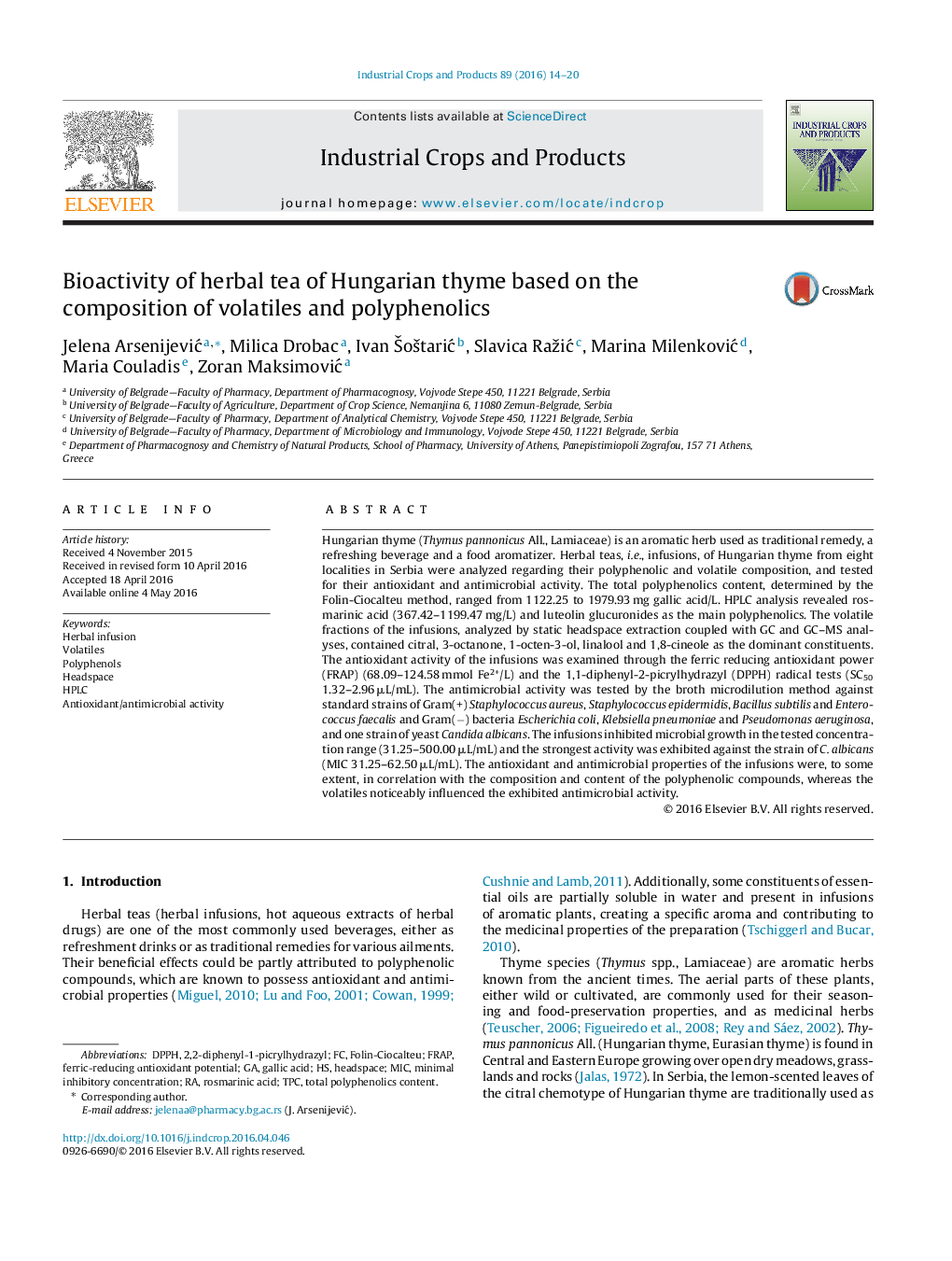| کد مقاله | کد نشریه | سال انتشار | مقاله انگلیسی | نسخه تمام متن |
|---|---|---|---|---|
| 4512117 | 1624821 | 2016 | 7 صفحه PDF | دانلود رایگان |

• Herbal teas of Hungarian thyme, culinary and medicinal herb, were analyzed.
• Rosmarinic acid and luteolin glucuronides were the most abundant polyphenolics.
• Citral, 3-octanone, 1-octen-3-ol, linalool or 1,8-cineole dominated in volatile fractions.
• Good antioxidant activity of infusions was demonstrated.
• Antimicrobial activity was noticeably influenced by the presence of volatiles.
Hungarian thyme (Thymus pannonicus All., Lamiaceae) is an aromatic herb used as traditional remedy, a refreshing beverage and a food aromatizer. Herbal teas, i.e., infusions, of Hungarian thyme from eight localities in Serbia were analyzed regarding their polyphenolic and volatile composition, and tested for their antioxidant and antimicrobial activity. The total polyphenolics content, determined by the Folin-Ciocalteu method, ranged from 1122.25 to 1979.93 mg gallic acid/L. HPLC analysis revealed rosmarinic acid (367.42–1199.47 mg/L) and luteolin glucuronides as the main polyphenolics. The volatile fractions of the infusions, analyzed by static headspace extraction coupled with GC and GC–MS analyses, contained citral, 3-octanone, 1-octen-3-ol, linalool and 1,8-cineole as the dominant constituents. The antioxidant activity of the infusions was examined through the ferric reducing antioxidant power (FRAP) (68.09–124.58 mmol Fe2+/L) and the 1,1-diphenyl-2-picrylhydrazyl (DPPH) radical tests (SC50 1.32–2.96 μL/mL). The antimicrobial activity was tested by the broth microdilution method against standard strains of Gram(+) Staphylococcus aureus, Staphylococcus epidermidis, Bacillus subtilis and Enterococcus faecalis and Gram(−) bacteria Escherichia coli, Klebsiella pneumoniae and Pseudomonas aeruginosa, and one strain of yeast Candida albicans. The infusions inhibited microbial growth in the tested concentration range (31.25–500.00 μL/mL) and the strongest activity was exhibited against the strain of C. albicans (MIC 31.25–62.50 μL/mL). The antioxidant and antimicrobial properties of the infusions were, to some extent, in correlation with the composition and content of the polyphenolic compounds, whereas the volatiles noticeably influenced the exhibited antimicrobial activity.
Figure optionsDownload as PowerPoint slide
Journal: Industrial Crops and Products - Volume 89, 30 October 2016, Pages 14–20